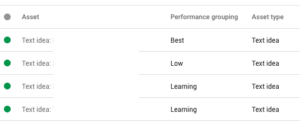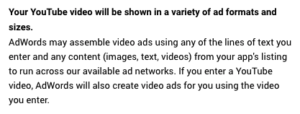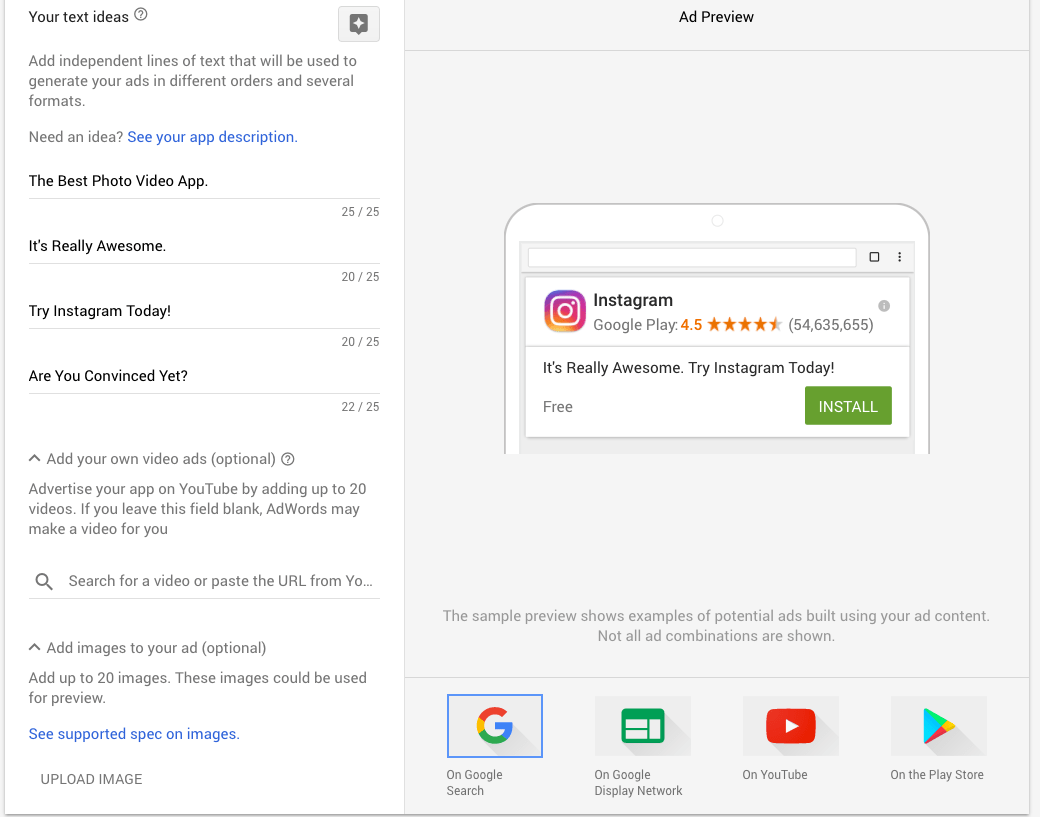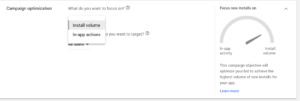Incipia blog
How to Optimize Google Adwords Universal Campaigns v 2.0
Today's post is a follow-up on an earlier post on how to optimize for Google Universal Campaigns (UAC), arriving in the wake of the depreciation announcement of app install campaigns across search/display/video.
As a prelude, if the day-to-day of managing ads isn't a good use of your time, you can hire Incipia. Contact us to discuss your campaign needs.
In order to optimize for Google Universal Campaigns, it's important to understand some of the ways in which they are different from Adwords campaigns. Here is a comparison of features (not a fully exhaustive list):
In short, Google Universal Campaigns are very easy to set up and leverage standardization of creative inputs, bidding, and reporting (or near lack thereof) to increase the scale that Adwords app advertisers can achieve with minimal effort. Advertisers give up control in favor of ease of use, which rubs many the wrong way, but as always is an opportunity for learning a new set of tricks and techniques. In addition to the tips provided in our previous post, here are several new tips for optimizing Google Universal Campaigns v 2.0:
- Test out Google's bidding optimization settings.
- Like Facebook Ads, Google UAC offers you a few different options of bidding optimization; yet unlike Facebook Ads, your only option at present is to be charged on a CPC-basis, not CPA.
- If you only care about installs, stick with the max installs campaign bidding setting.
- But if you care about actions, try running both a max installs Universal campaign optimized for people likely to complete your action and a target CPA Universal campaign (tCPA) campaign for the action you care about.
- Use campaign asset reporting to optimize your creative inputs.
- In Google UAC 2.0, Google is all about machine-learning, so get familiar with Google's "performance grouping" data point. Essentially, Google Universal Campaign performance grouping is the algorithm's stack-rank for ads that it likes to serve most. While the "best" ad will eventually begin to show better performance (i.e. CPA), it may start off at a worse rate. Generally, it's a good idea to optimize for ad texts with best and good labels, and swap out low labeled ad texts.
- Also, keep in mind that while performance history for each ad text idea will store in the reports, this performance grouping data point will disappear after you switch an ad text idea out, so it's a good idea to write down each ad text idea's performance grouping before making a change.
- Additionally, be aware that creatives can be combined together (e.g. two ad text ideas), so the performance of any one creative isn't necessarily a full picture of that creative's impact overall.
- And be sure that you have your adblocker paused on the Adwords domain, as this will restrict the display images from rendering in your browser, making it tough to analyze performance!
- Lastly, be aware that Google can take liberties to create display or video assets using your app listing, even if you do not add assets into your Universal Campaigns. So, if you are running UAC, it's best to maintain creative control by adding images/videos and optimizing them, rather than letting Google Frankenstein your display/video ads. See the second image below.


- In Google UAC 2.0, Google is all about machine-learning, so get familiar with Google's "performance grouping" data point. Essentially, Google Universal Campaign performance grouping is the algorithm's stack-rank for ads that it likes to serve most. While the "best" ad will eventually begin to show better performance (i.e. CPA), it may start off at a worse rate. Generally, it's a good idea to optimize for ad texts with best and good labels, and swap out low labeled ad texts.
- Avoid making too many changes at once.
- When you set up a new campaign, you will see a speech bubble that expands to say something like "x day since the last significant change," where x is a number between 1 and 7. This is Google UAC's way of saying that results may not be optimal until the learning period is over and if you make bid or budget changes during that time period, it could reset the learning period. It's hard to know how much of this is the standard Google line vs. a true optimization requirement, but we certainly have noticed adverse effects from making too many changes and seen better performance when making fewer changes, so there is a good dose of truth to playing along and letting Google's algorithm run.
- Test UAC for both iOS and Android.
- Did you know that Universal Campaign works for iOS, too? By and large, iOS Universal Campaigns don't perform as well as Android UAC, yet they are worth testing if your CPI targets are high enough (i.e. at least $2-3).
- Add punctuation to your ad text ideas if you have room.
- Google UAC will combine your ad text ideas together as-is, which doesn't include punctuation and can look odd if your ad text ideas don't contain any.
- Use a mid-funnel event for your tCPA campaign
- Optimizing for installs is out of style, but optimizing for purchase events may be too low in the funnel to align your costs while maintaining good scale. For best results, make sure that you are passing Google Adwords an event beyond the install, but before the bottom-of-funnel KPI. Examples include registrations, sign ups, account creations, early level completions,
While those above are several standard best practices, here are some additional, intermediate-level tips for running Google Universal Campaigns:
- Test campaigns at different bid levels.
- Google's line is also that your budget should be 50-100x your bid (i.e. at a bid of $2, your budget should be $100-$200/day at least), so with smaller budgets this may not always pan out so well. Additionally, Google recommends not to overlap UAC targets; but using this strategy can increase your overall Universal Campaign efficiency, especially when using different bidding optimizations, creatives, or geographic segments.
- Test campaigns in different geographies.
- Google also recommends using fewer Universal Campaigns covering larger geographic areas, but by segmenting geos by performance level or creative responsiveness, you can also increase efficiency. Be aware, though that segmenting too tightly can kill your volume and prevent your campaigns from getting off the ground.
- Test different creative input dimensions.
- Google Universal Campaigns support several different dimensions, each of which enables your ads to show in different placements, so testing different dimensions is a very powerful lever for influencing performance.
- The following are acceptable UAC image asset dimensions (also make sure your images are PNG/JPG and 150kb in size):
- 320x50 – mobile banner
- 300x250 – inline rectangle
- 320x480 – smartphone interstitial, portrait (don't miss this one!)
- 1200x628 – landscape image, for native ads (this is also the standard input for Facebook Ads)
Once more, if the day-to-day of managing ads isn't a good use of your time, you can hire Incipia. Contact us to discuss your campaign needs.
That's all for now, folks! Be sure to bookmark our blog, sign up to our email newsletter for new post updates and reach out if you're interested in working with us.If this seems like too much
Incipia is a mobile app development and marketing agency that builds and markets apps for companies, with a specialty in high-quality, stable app development and keyword-based marketing strategy, such as App Store Optimization and Apple Search Ads. For post topics, feedback or business inquiries please contact us, or send an inquiry to hello@incipia.co.
Categories
Tags:
- A/B testing
- adjust
- advertising
- adwords
- agile
- analytics
- android development
- app analytics
- app annie
- app development
- app marketing
- app promotion
- app review
- app store
- app store algorithm update
- app store optimization
- app store search ads
- appboy
- apple
- apple search ads
- appsee
- appsflyer
- apptamin
- apptweak
- aso
- aso tools
- attribution
- client management
- coming soon
- design
- development
- facebook ads
- firebase
- google play
- google play algorithm update
- google play aso
- google play console
- google play optimization
- google play store
- google play store aso
- google play store optimization
- google uac
- google universal campaigns
- idfa
- ios
- ios 11
- ios 11 aso
- ios 14
- ios development
- iot
- itunes connect
- limit ad tracking
- ltv
- mobiel marketing
- mobile action
- mobile analytics
- mobile marketing
- monetization
- mvp
- play store
- promoted iap
- promoted in app purchases
- push notifications
- SDKs
- search ads
- SEO
- skadnetwork
- splitmetrics
- startups
- swift
- tiktok
- uac
- universal app campaigns
- universal campaigns
- user retention
- ux
- ux design


